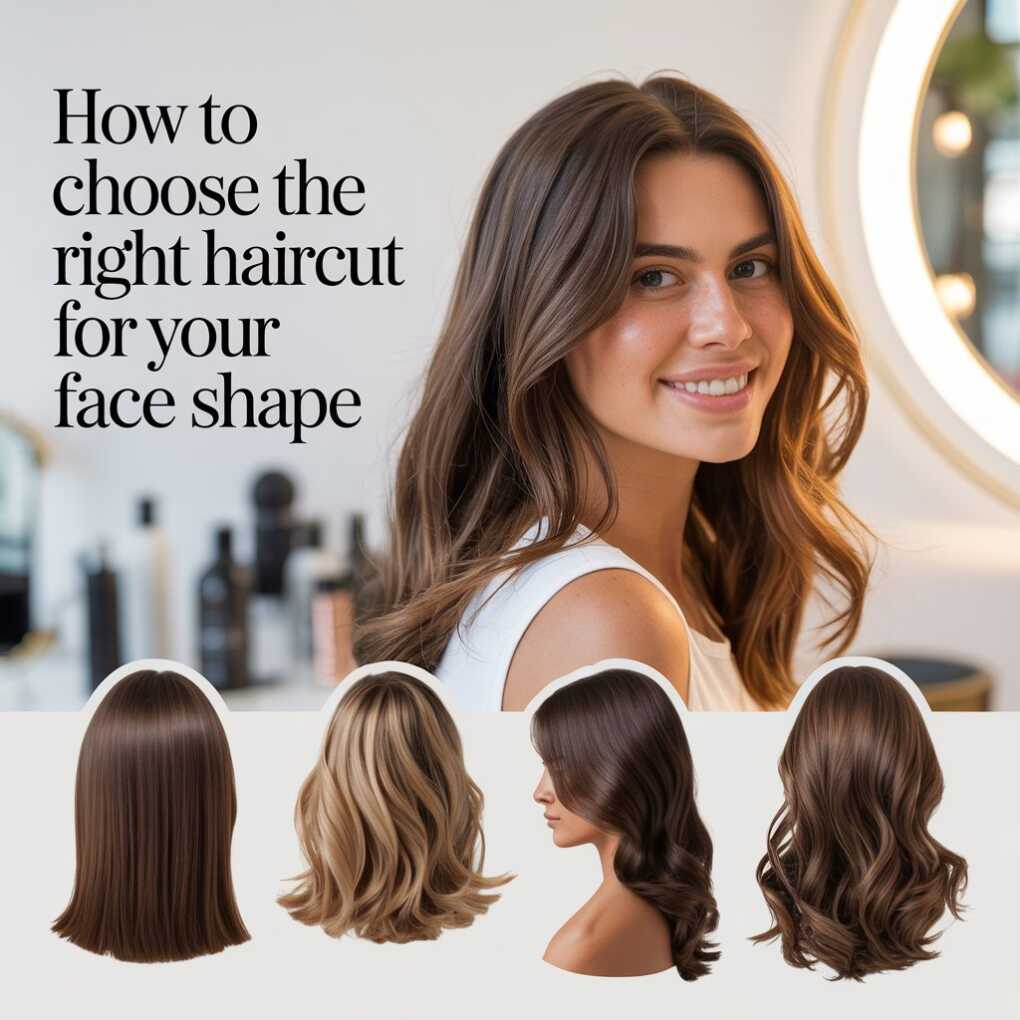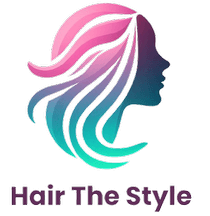Finding the perfect haircut can feel overwhelming in today’s world of endless style options. Yet the secret to a stunning look isn’t just following trends—it’s understanding how your facial geometry interacts with different cuts. Whether you’re stepping into a barbershop for the first time or revamping your signature style, aligning your haircut with your unique face shape creates harmony, boosts confidence, and elevates your entire presence. This guide will help you decode the art and science behind face-shape-focused styling for results that flatter your natural features.
At Grey Square Salon, experts emphasize that “a great haircut should highlight your best features and suit your lifestyle.” This philosophy reveals why choosing based on face shape matters more than blindly following viral trends. When your hairstyle works with your anatomy rather than against it, you achieve that effortless, “this was made for me” look that transforms ordinary style into standout sophistication.

Why Face Shape Determines Your Perfect Cut
Style begins with shape—this isn’t just fashion theory but geometric truth. As noted by grooming experts at Fashion Sentral, “a well-chosen haircut isn’t just about trends. It’s about geometry. When tailored to face shape, the proper cut elevates a man’s look from average to sharp.” This precision turns basic grooming into strategic self-presentation, where balanced proportions create visual harmony.
“For men conscious of image, choosing the proper cut can define their entire presence.” — Fashion Sentral
Your face shape acts as the canvas for your hairstyle. Ignoring it is like wearing ill-fitting clothes—they might be trendy, but they won’t showcase your best self. The right cut strategically balances your features: elongating shorter faces, softening strong jaws, or adding structure to rounder profiles. This approach transforms styling from guesswork into a calculated enhancement of your natural assets.
How to Determine Your Face Shape in 5 Minutes
Stand before a mirror with your hair pulled back, tracing your face outline with a washable marker or snapping a straight-on photo. Measure four key areas using a flexible tape measure:
- Forehead width (temples)
- Cheekbone width (widest point)
- Jawline width (from chin to ear)
- Face length (hairline to chin)
Compare these measurements to identify your dominant shape. For instance, if your face length is roughly 1.5 times your width, you likely have an oblong shape. Consistency across multiple angles ensures accuracy—avoid squinting or tilting your head during assessment.
“Take note of the length, width, and the prominence of your cheekbones, jawline, and forehead.” — DeLiRe’s Beauty Salon
The 6 Face Shapes & Their Perfect Haircuts
Oval Face: The Chameleon Canvas
Oval faces feature balanced proportions with a slightly rounded jaw and forehead wider than the chin. This universally flattering shape handles nearly any style—from undercut fades to voluminous pompadours. Focus on maintaining proportion rather than correction.
| Face Shape | Best Haircuts | Styles to Avoid |
|---|---|---|
| Oval | Textured crops, classic pompadours, side parts | Extremely short buzz cuts that elongate the face |
Round Face: Create Angular Balance
Round faces show equal width/height with soft jawlines and full cheeks. Prioritize height at the crown to elongate vertically while keeping sides tapered. Avoid blunt bangs or rounded styles that accentuate width.
Top Choices: High fades, quiffs, comb-overs
Avoid: Full fringes or uniform-length cuts
Square Face: Soften Strong Features
Defined by broad foreheads, squared chins, and strong jawlines, square faces benefit from styles adding height rather than width. Textured tops with faded sides prevent top-heaviness while maintaining masculine structure.
“The secret often lies in how well their hairstyle aligns with their face shape.” — Garden Plaza Barber Shop
Heart Face: Balance Forehead Width
Wider foreheads tapering to narrow chins require volume at the jawline. Side-swept fringes soften brow lines while textured crops add width below the cheekbones. Avoid center parts or styles emphasizing forehead height.
Diamond Face: Accentuate Symmetry
Wide cheekbones with narrow foreheads/jawlines need width at the temples. Full fringe styles and textured layers create balance, while pompadours add necessary forehead volume without overwhelming features.
Oblong Face: Shorten the Silhouette
Longer faces with high foreheads require horizontal emphasis. Medium-length cuts with fringe elements break up face length, while avoiding extreme fades prevents elongation. Think modern crew cuts or textured crops with volume at the sides.
Pro Barber’s Checklist Before Your Next Cut
Before showing your barber a Pinterest photo, consider these professional insights:
The Triangle Rule:
Your haircut should form a visual triangle balancing:
- Face shape (foundation)
- Hair type (texture/thickness)
- Lifestyle (styling time available)
Texture Consideration Table:
| Hair Type | Recommended Styles | Styling Tip |
|---|---|---|
| Fine/Thin | Textured crops, layered fades | Use volumizing mousse at roots |
| Thick/Curly | Tapered cuts, frohawks | Avoid over-layering to prevent puffiness |
| Straight | Classic side parts, pompadours | Matte paste maintains shape without shine |
“The process of how to pick a haircut men feel good about involves more than just pointing at a picture; it’s about understanding what works for you.” — OX The Barber
Pro Tip: Bring two reference photos—one of a style you like, and one of your face from the shoulders up. This helps your barber adapt trends to your actual proportions rather than applying generic cuts.
4 Costly Mistakes That Ruin Great Haircuts
⚠️ Copying Celebrity Styles Blindly
Just because David Beckham rocks a high-skin fade doesn’t mean it suits your round face. Celebrities often have professional stylists adjusting cuts for their specific features—a lesson from Garden Plaza Barber Shop: “This is more than just finding a haircut you like—it’s about finding one that complements your features.”
Ignoring Hair Growth Patterns
Whorls and cowlicks can sabotage even the most flattering cuts. Request a dry cut consultation to map your hair’s natural flow before committing.
Overlooking Maintenance Needs
That sleek undercut might look stunning on Instagram, but if it requires daily styling and you’re perpetually late for work, you’ll regret it. Be honest about your grooming routine upfront.
Skipping the Face Shape Conversation
Many men simply say “I want what he got” while pointing. Instead, ask: “Based on my face shape, how would you modify this style to work for me?” This transforms your cut from generic to personalized.
The Lifestyle Factor: Making Style Sustainable
Your ideal haircut must survive your daily reality. A tech CEO needing boardroom-ready polish requires different styling than a construction worker prioritizing practicality. Consider:
Your Daily Routine:
- 5-min routine: Textured tapers, French crops
- 15+ min styling: Pompadours, slick backs
- Zero maintenance: Buzz cuts (if face shape permits)Climate Considerations:
Humid environments demand cuts with less frizz potential—opt for tighter fades rather than voluminous styles that wilt by noon. Cold climates allow for longer tops that frame the face without overheating.
“A great cut can boost your confidence, while the wrong one can leave you counting the days until it grows out.” — OX The Barber
Advanced Styling: From Good to Gallery-Worthy
Once you’ve mastered basic shape alignment, elevate your look with these pro techniques:
The Illusion Principle
Create optical balance through strategic layering:
- Round faces: Add diagonal part lines to break symmetry
- Square jaws: Uneven fades soften angularity
- Oval faces: Play with asymmetry for modern flair
Product Pairing Guide
Match styling agents to both hair type and desired effect:
| Effect | Product | Application Tip |
|---|---|---|
| Natural texture | Sea salt spray | Scrunch into damp hair |
| Defined separation | Low-shine pomade | Apply to dry hair |
| Volume at roots | Dry shampoo | Blast at roots before styling |
Seasonal Adjustments
Rotate styles with changing conditions:
- Summer: Shorter sides, tapered necklines
- Winter: Slightly longer tops for warmth
- Special events: Temporary color highlights to emphasize face structure
When to Break the Rules (And How to Do It Right)
While face shape guidelines provide essential foundations, intentional rule-breaking creates signature style. The key is controlled deviation:
- Round face wearing curtain bangs? Ensure substantial temple volume to counteract added cheek emphasis
- Square-jawed man trying a bowl cut? Keep temples tightly faded to prevent top-heaviness
- Oblong face with a mohawk? Maintain base width with textured side growth
“There’s no ‘one size fits all’ when it comes to haircuts.” — Grey Square Salon
Consult your barber about adapting trend styles rather than adopting them wholesale. A skilled stylist can modify viral cuts to honor your proportions while keeping you current.
Your Action Plan for the Perfect Cut
- Identify your shape using the mirror method outlined earlier
- Research 3 styles matching your face shape and lifestyle
- Book a consultation (not just a cut) for personalized advice
- Start gradual—if growing hair, request micro-adjustments every 3 weeks
Remember: Haircuts should evolve with you. Reassess every 6 months as your style confidence grows. The perfect haircut isn’t a destination but a journey of refinement—where each visit builds on the last to create your most authentic, flattering look.
“With this information, you can confidently choose a men’s hairstyle that truly fits.” — OX The Barber
Your face is uniquely yours. Now you have the tools to choose a haircut that doesn’t just sit on your head—it completes your entire presence. Next time you enter the barbershop, you won’t just ask for “a regular cut.” You’ll request the precise style engineered to make your features shine.
